Each dish has its own meaning, not only showing respect for long-standing values but also carrying wishes for a new year full of luck and prosperity.
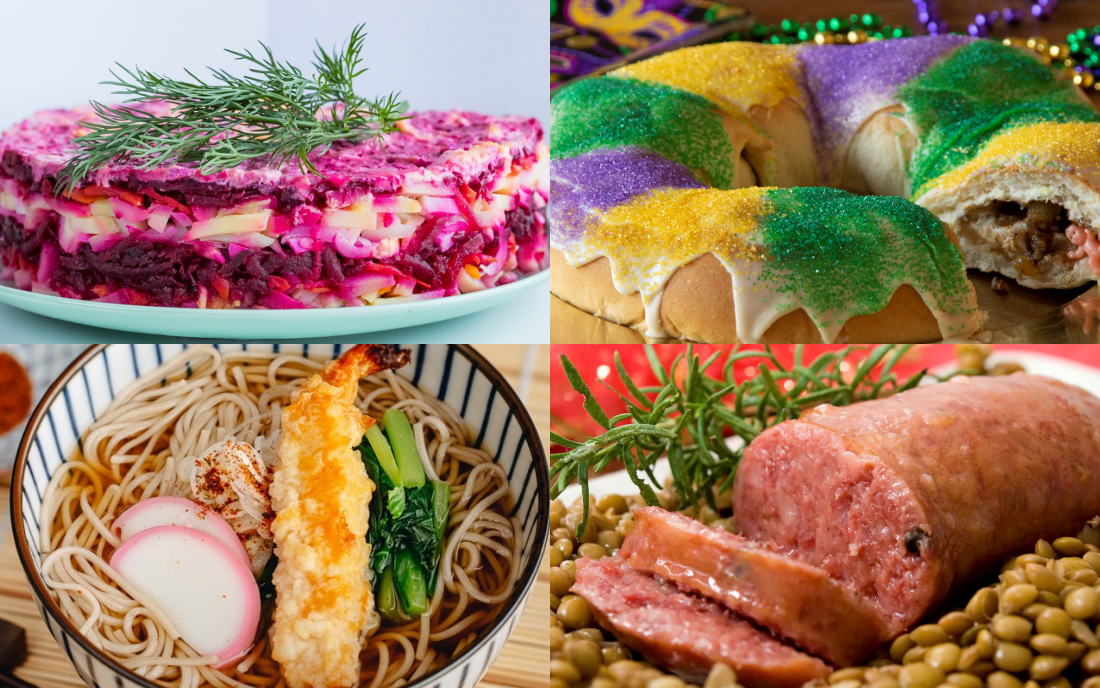
Red radish salted fish salad, king cake, soba noodles, Cotechino con Lenticchie... are traditional New Year dishes of countries around the world - Photo: Just One Cookbook
Welcoming the New Year is an opportunity for each country to express its unique cultural features through parties. Besides festivals and customs, cuisine also plays an important role in connecting people and wishing for a peaceful and prosperous new year.
Tuoi Tre Online introduces 10 unique New Year dishes from countries around the world, including: Tamales (Mexico), Oliebollen (Netherlands), Cotechino con Lenticchie (Italy), Kransekage (Denmark and Norway)...
Hoppin' John (South America)
Originating from Africa and the West Indies, Hoppin' John quickly became an indispensable part of the New Year's table when it was introduced to South America.
This dish consists of black beans, white rice, and bacon or ham, all cooked together to create a rich and delicious flavor. Some families also add broccoli or cabbage to the dish, symbolizing prosperity.
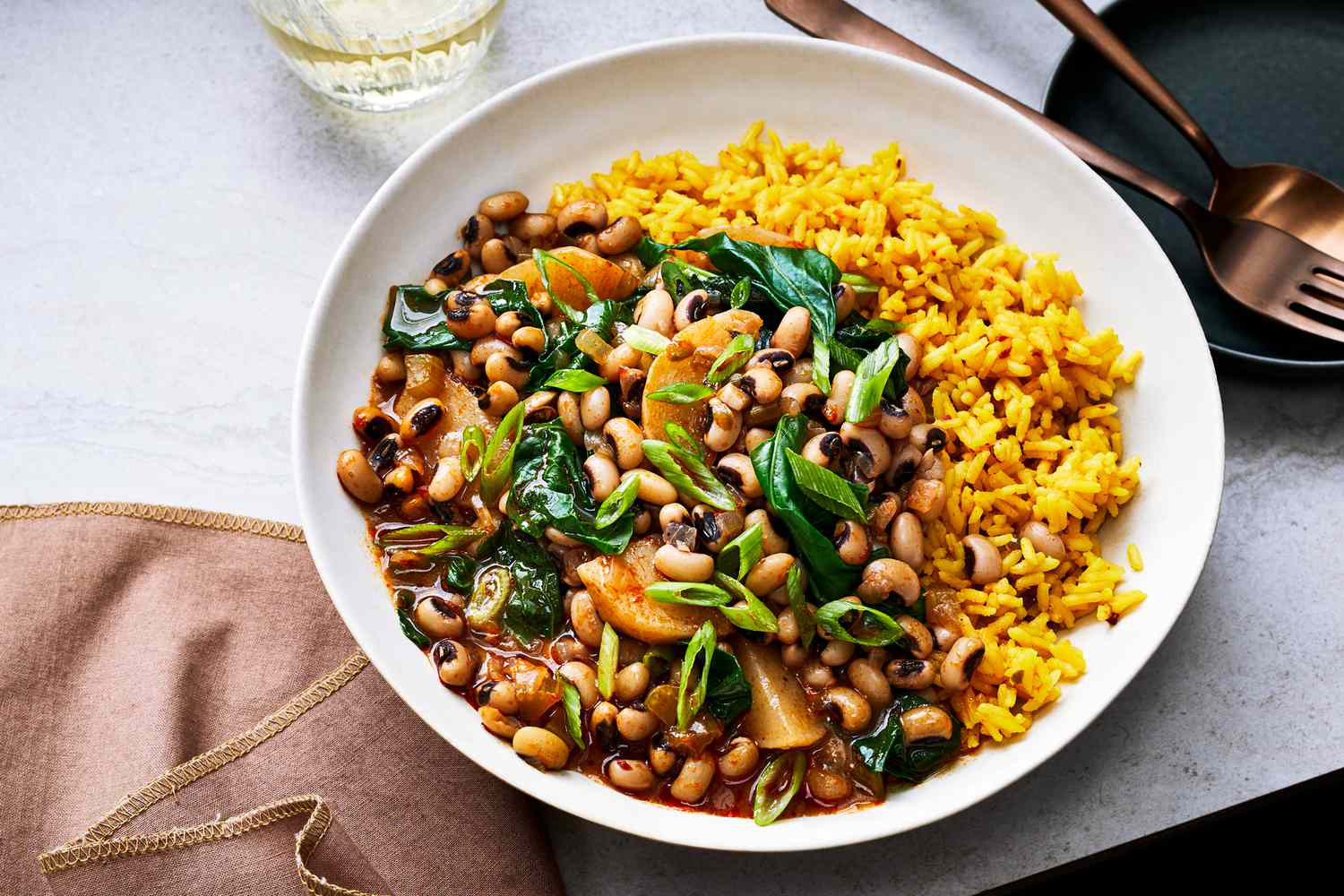
This dish is quite easy to make and can be varied with many different ingredients - Photo: Food & Wine
Hoppin' John is meant to bring good luck and fortune in the new year. According to folklore, black beans represent coins, while rice symbolizes abundance.
For added luck, people often place a coin under a bowl of Hoppin' John before eating. This dish represents the spirit of reunion and hope for a good new year.
Tamales (Mexico)
Tamales are a traditional New Year's dish in Mexico. They are made from corn dough (masa), filled with meat, beans, or peppers, wrapped in corn or banana leaves and steamed.
Depending on the region, tamales can be prepared with a variety of fillings, from savory like chicken, pork with mole sauce, to sweet with raisins, coconut or chocolate.
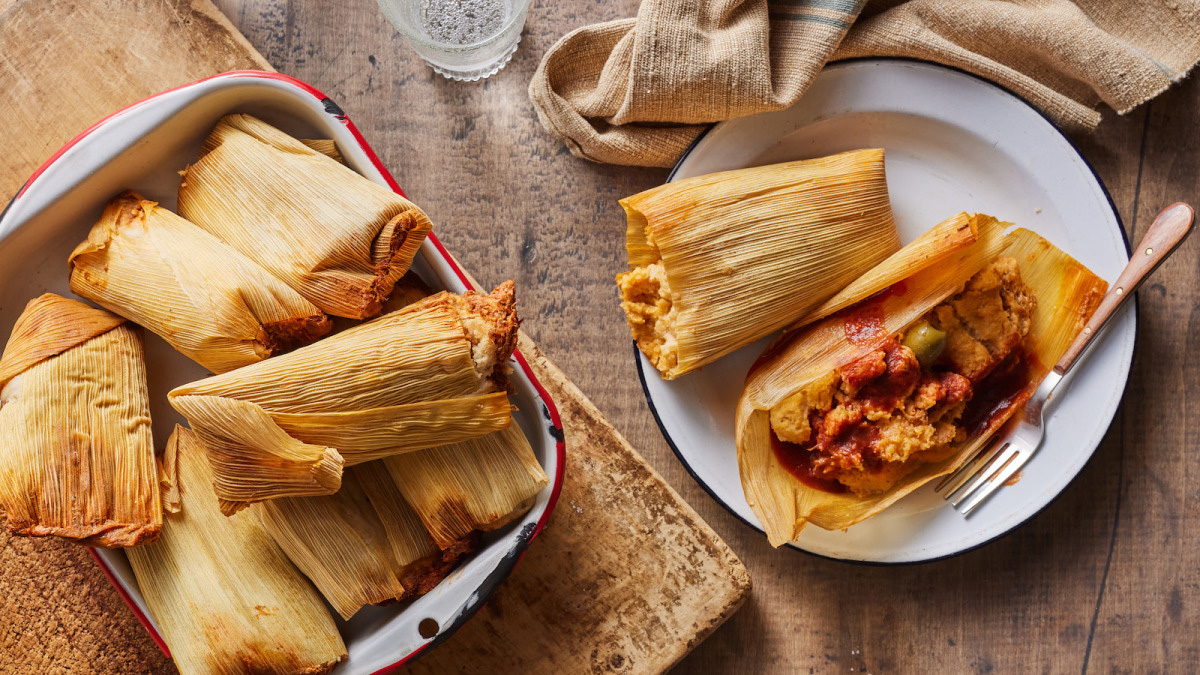
Tamales are often served with sauces such as salsa, guacamole or sour cream. People can also eat tamales with omelets, french fries, or green vegetables - Photo: Food
Tamales are more than just a food; they also have a deep meaning of family and community. The tradition of making tamales is often done in groups, with the whole family preparing the ingredients and wrapping the tamales together.
This dish is considered a wish for a prosperous, full and lucky new year.
Oliebollen (Netherlands)
Oliebollen, also known as oil doughnuts, are a traditional Dutch dish during New Year's Eve.
These cakes are round in shape, made from flour, eggs, milk, yeast and are often topped with raisins or chopped apples for a special flavor.
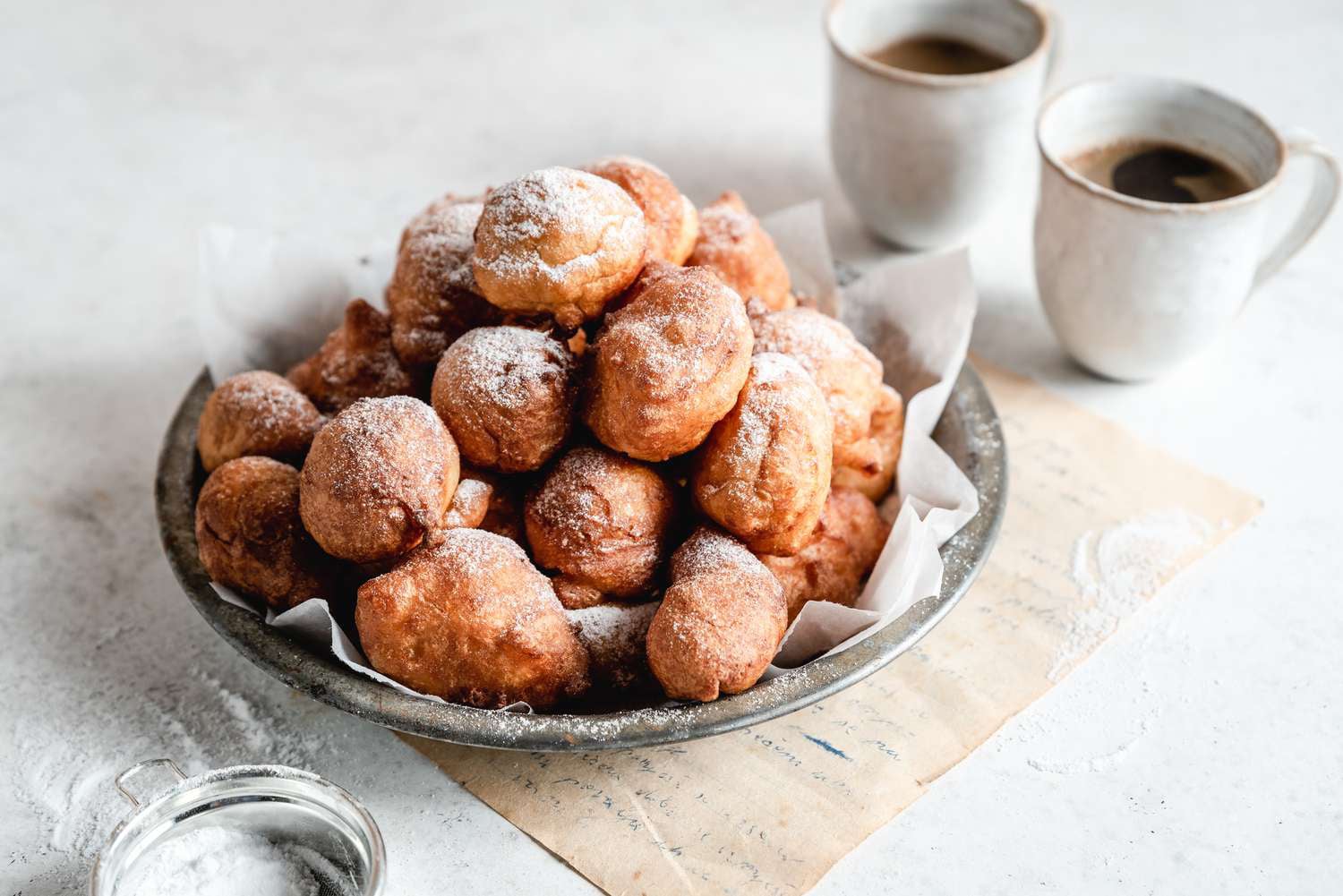
The Dutch believe that eating oliebollen on New Year's Eve will help ward off bad luck from the old year - Photo: The Spruce Eats
After being deep fried until golden brown, the oliebollen are coated with a sweet layer of powdered sugar, creating a rich and fragrant flavor.
This dish is usually made on New Year's Eve and is considered a symbol of good luck.
According to custom, Dutch people eat oliebollen to ward off evil spirits and welcome good things in the new year.
Today, oliebollen is not only a dish but also a part of Dutch culture, making the festive season even warmer.
Marzipanschwein (Germany and Austria)
Marzipanschwein, or marzipan pig, is a popular New Year's gift and lucky symbol in Germany and Austria.
The little pigs are made from sweet almond paste (marzipan), cutely shaped with rosy cheeks, often accompanied by a four-leaf clover or coin, symbolizing fortune and happiness.
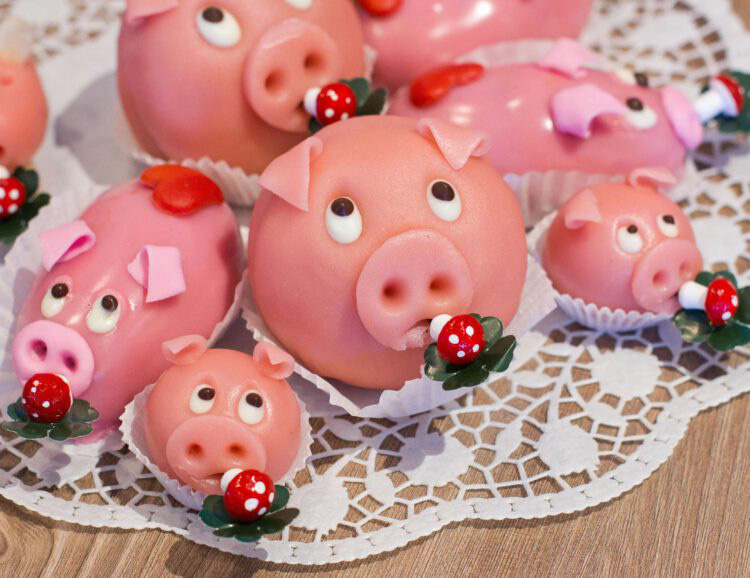
In many cultures, pigs are seen as a symbol of wealth and prosperity. Giving or receiving a marzipan pig on New Year's Day is considered a wish for good fortune - Photo: Zuckerbäckerei
In German and Austrian culture, pigs are considered a symbol of abundance and prosperity. Giving each other marzipanschwein at the beginning of the year is a way to express wishes for luck, health and success in the new year.
These sweet pigs are often sold everywhere from Christmas markets to bakeries, adding to the festive atmosphere.
Soba Noodles (Japan)
Soba noodles are a traditional dish that is indispensable during the New Year in Japan, and are called toshikoshi soba (sending off the old year noodles).
This dish has deep meaning, symbolizing wishes for longevity, health and overcoming difficulties.
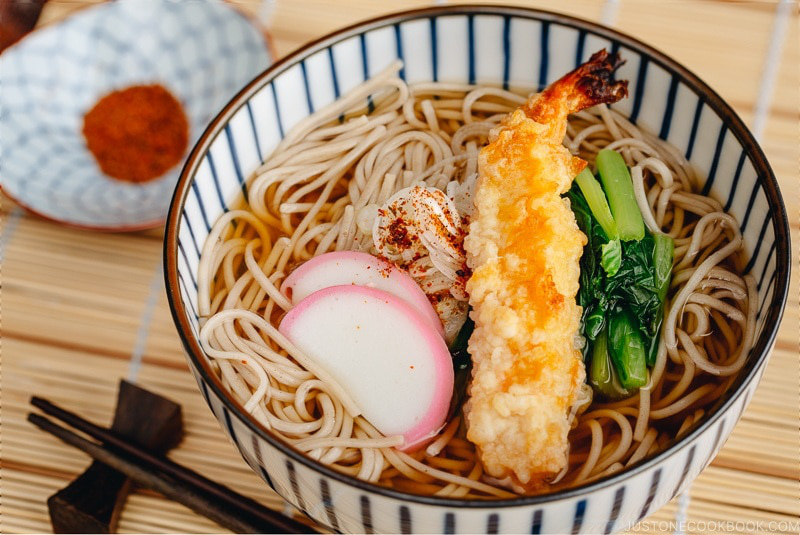
Eating soba noodles on New Year's Eve is seen as a prayer for a peaceful and successful new year - Photo: Just One Cookbook
The long, thin soba noodles represent a lasting life, while the buckwheat ingredient represents a strong will.
Japanese people often eat soba noodles on New Year's Eve, gathering around the dinner table with their families, to end the old year and welcome the new beginning.
Depending on the region, soba can be prepared hot or cold, combined with dashi broth, green onions, seaweed and tempura. This is not only a simple dish but also a custom, wishing for all the best in the new year.
Cotechino and Lenticchie (Italy)
Cotechino con Lenticchie, a sausage stew with lentils, is a traditional Italian symbol of the New Year's Eve party.
Cotechino, a large sausage made from minced pork, is slow-cooked to retain its delicious flavor. Lentils, shaped like small coins, symbolize prosperity and wealth in the new year.
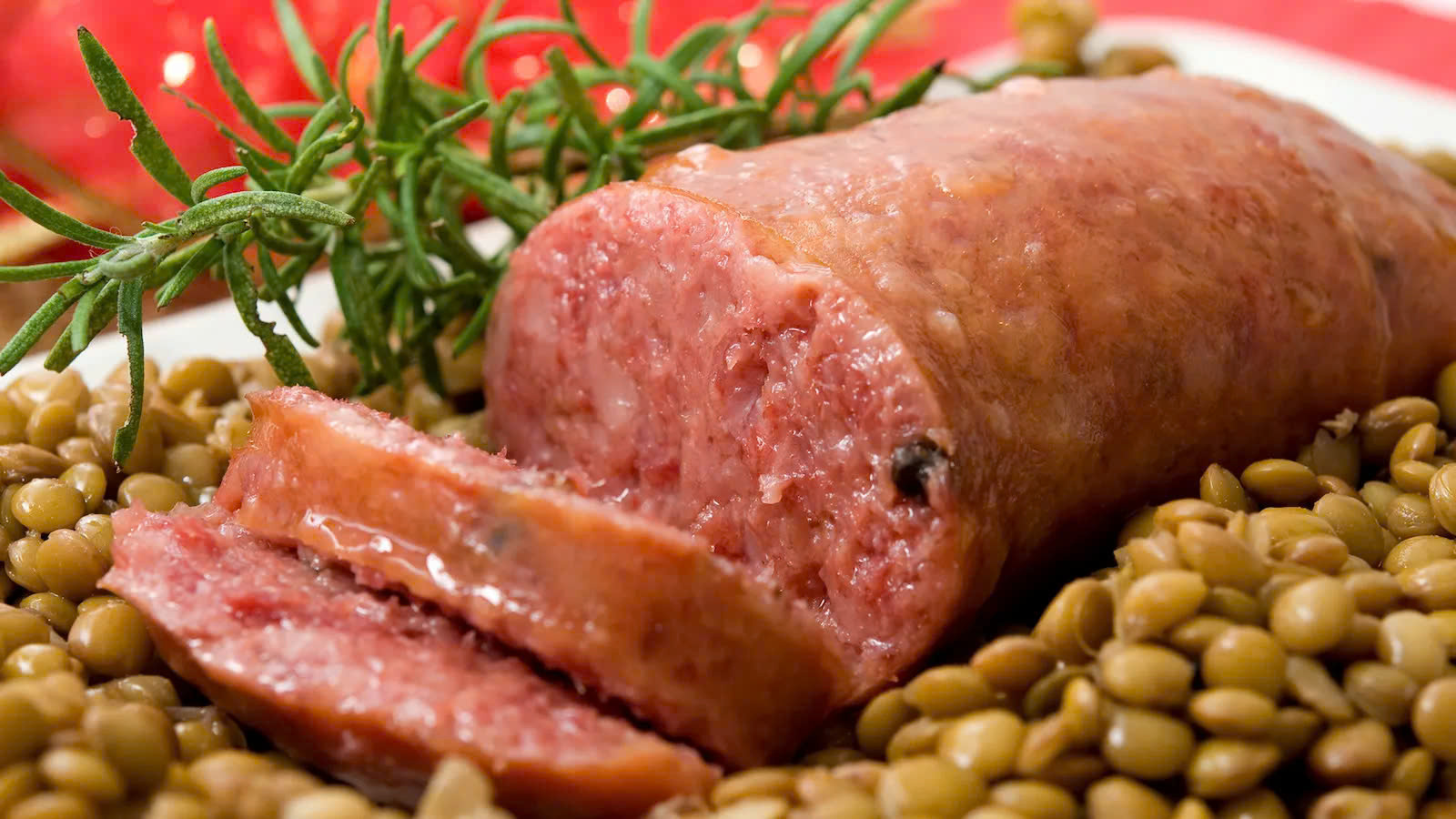
Cotechino con Lenticchie has a rich, savory flavor of pork combined with the rich, fatty taste of lentils. This dish is often stewed with spices such as garlic, bay leaves, and black pepper to enhance the flavor - Photo: La Cucina Italiana
Italians believe that eating this dish on New Year's Eve will bring good luck and fortune. Usually, the dish is served hot, accompanied by mashed potatoes or bread to make it more attractive.
With its rich flavor and auspicious meaning, Cotechino con Lenticchie becomes an indispensable dish on the Italian New Year's table.
Pickled Herring (Poland and Scandinavia)
Pickled herring is a popular traditional New Year's dish in Poland and Scandinavian countries.
Herring is marinated with salt, vinegar, onions and spices such as pepper and bay leaves to create a distinctive flavor. The cook can add sour cream or mustard sauce to enrich the dish.
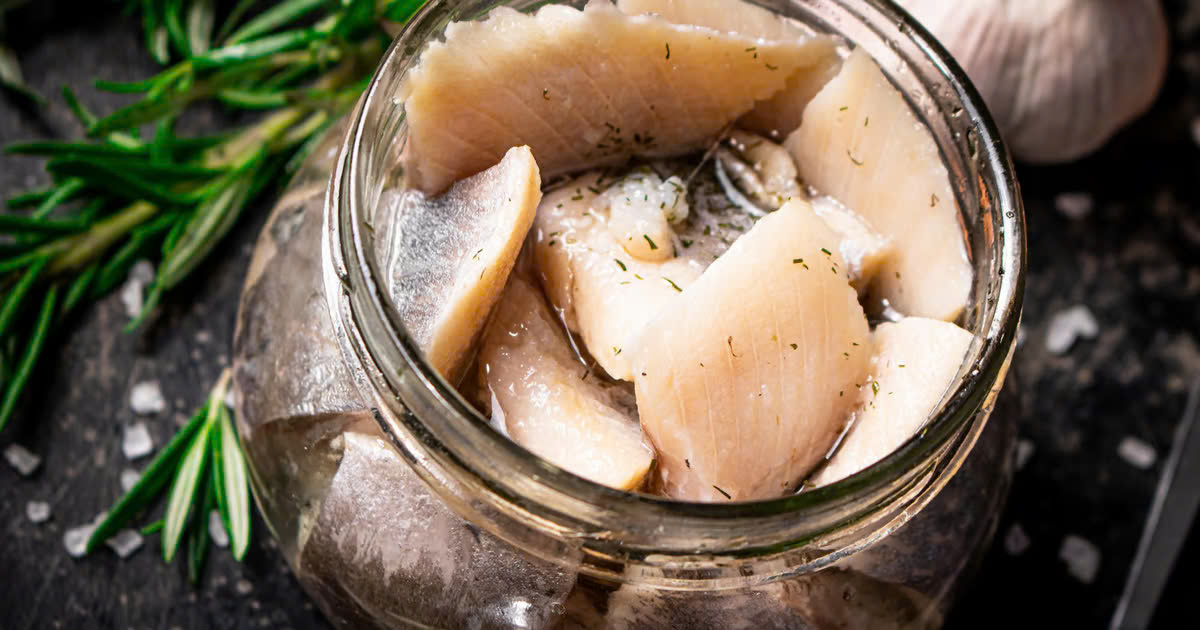
Herring is a very popular fish in Nordic countries, they are easy to catch and preserve by salting - Photo: Viking Soul Food
This dish is not only a part of culinary culture but also has a deep meaning. With its silvery appearance, herring is considered a symbol of wealth and prosperity.
People believe that eating pickled herring on New Year's Eve will bring good luck and financial prosperity in the new year.
Kransekage (Denmark and Norway)
Kransekage, or tower doughnuts, are a traditional dessert that is prominent during holidays, especially New Year's in Denmark and Norway.
The cake is made from almond flour, sugar and egg whites, forming circular rings of cake stacked on top of each other in a pyramid shape.
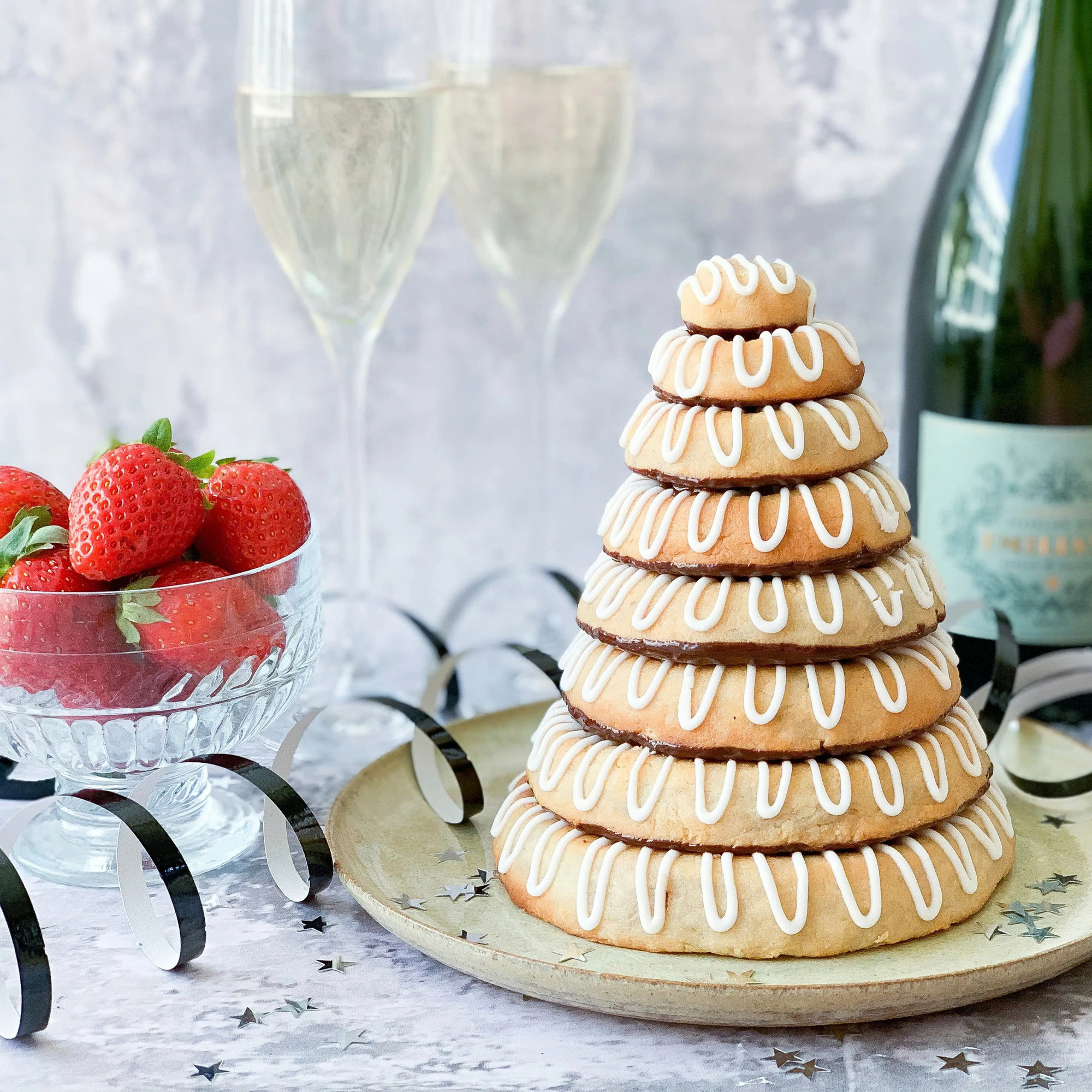
Kransekage (also known as wreath cake) is a cake tower made of many marzipan rings stacked on top of each other, from large to small, forming a cone shape - Photo: Easis
These cakes are often decorated with powdered sugar, icing patterns or colorful candies, creating a beautiful and delicate appearance.
Kransekage is not only a delicious cake but also symbolizes luck, prosperity and unity.
On New Year's Eve, the cake is often served with sparkling wine or spirits, marking the beginning of the new year with joy and good wishes.
Red beet salted fish salad (Russia)
Red beetroot salted fish salad, also known as Selyodka pod Shuboy in Russian, is a traditional dish during festive events, especially New Year in Russia.
This salad consists of salted fish (usually herring), red beets, potatoes, onions, and a layer of mayonnaise on top, forming a colorful "hat".
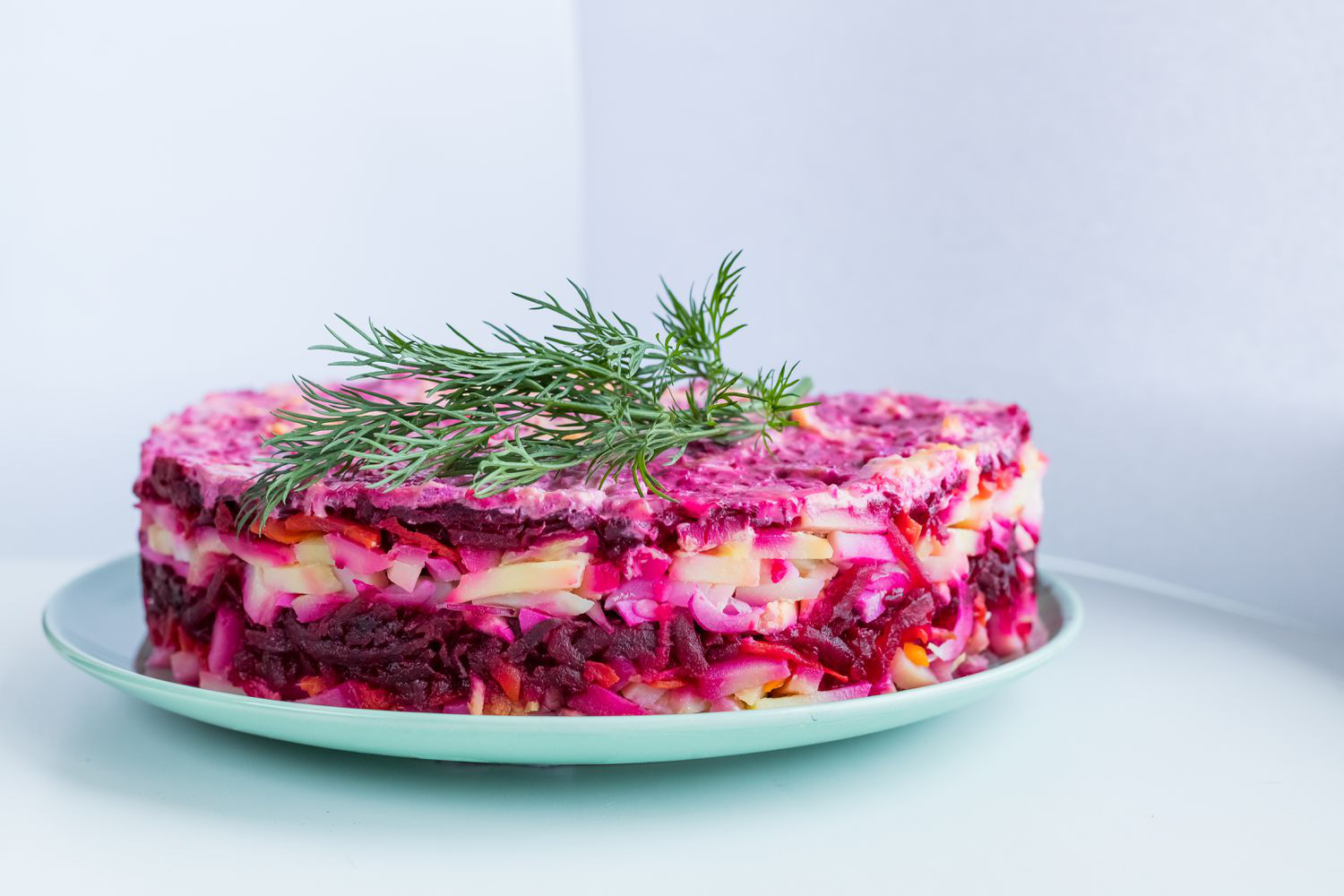
The salty taste of herring combined with the sweetness of red beets, the rich taste of potatoes and the creamy taste of mayonnaise creates a harmonious, unforgettable flavor - Photo: The Spruce Eats
Red radishes not only make salads more beautiful but also bring a sweet taste and bright red color symbolizing luck and health.
This dish is prepared in many layers, each layer creating a distinct flavor, from the saltiness of the salted fish to the sweetness of the red beets and potatoes.
Red beetroot salted fish salad is often served with black bread, creating a hearty and meaningful feast.
This is an indispensable dish in New Year parties, expressing wishes for a full and happy new year.
King cake (many countries)
King cake is a typical spring festival cake and is especially popular during Mardi Gras in many countries, from the United States to countries like France, Spain and some regions of Latin America.
Each country has its own variation, but all keep one thing in common: the round shape of the cake, symbolizing the crown of the kings.
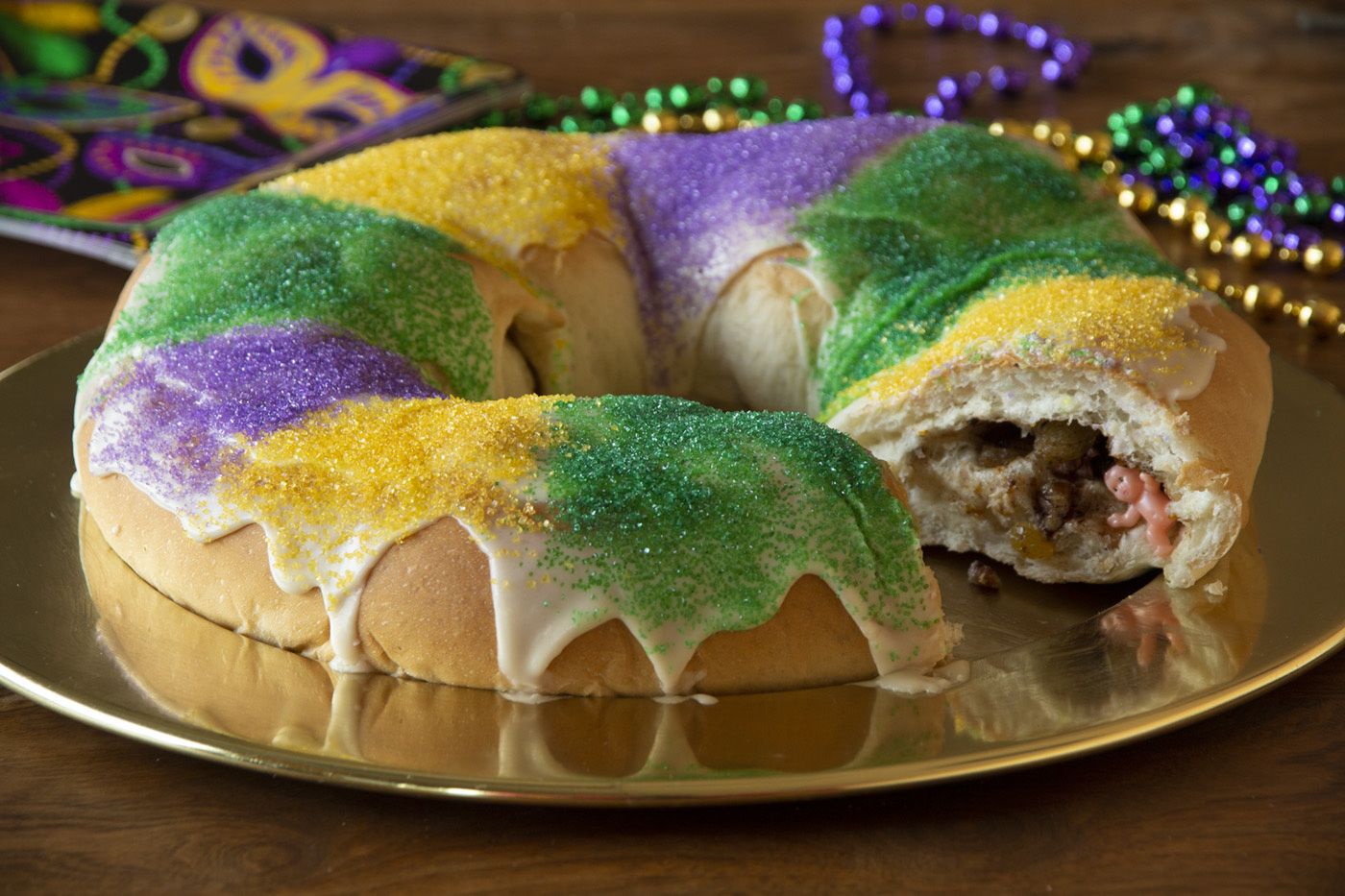
A characteristic of king cake is the coin or small item hidden inside the cake - Photo: Southern Living
In France, king cake is called galette des rois, made from puff pastry with almond filling, and often appears on the occasion of Epiphany.
Meanwhile, in Spain and Spanish-speaking countries, king cake, also known as roscón de reyes, is often covered in sugar and topped with fruits, symbolizing the jewels in the crown.
In the United States, especially during the Mardi Gras festival in Louisiana, king cakes are decorated with the festival's signature colors of purple, gold, and green.
A small item (usually a coin) is hidden in the cake and the person who finds it is considered the "king" or "queen" of the festival, and will have good luck in the coming year.
Source: https://tuoitre.vn/salad-ca-muoi-cu-cai-do-banh-vua-mi-soba-la-cac-mon-an-truyen-thong-don-nam-moi-20241231120225205.htm








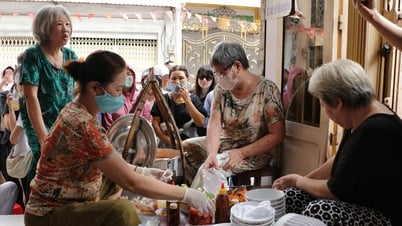

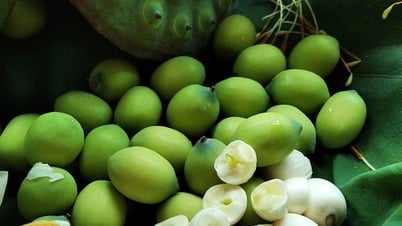

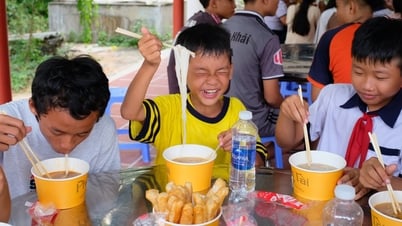


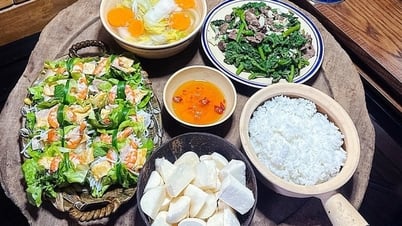





























































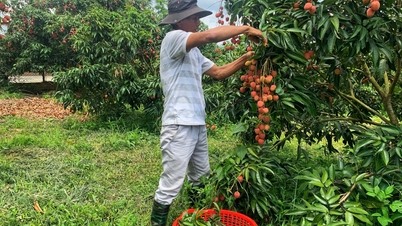

















Comment (0)